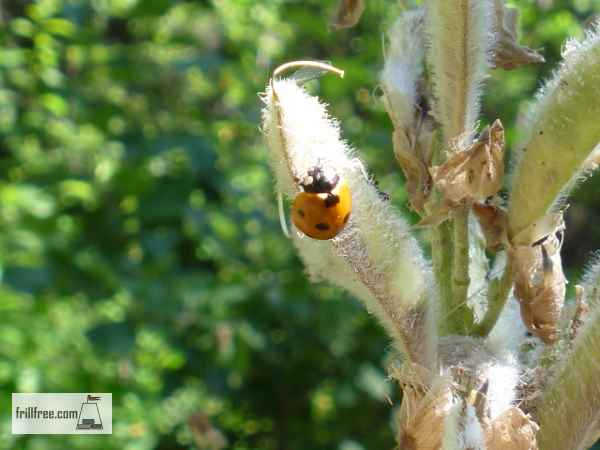- Homesteading
- Garden Bugs
- Lady Bugs
Lady Bugs
The Most Useful Organic Garden Predator
These little red black spotted beetles are well known, but did you know
it's the larvae that create havoc among pest populations?The latin name is Coccinella septempunctata, which means red bug with seven dots. However, they can have fewer or more, depending on their race.
The adults eat a few as they look around for a good burgeoning group of aphids or other pests to lay their eggs among.
The
larvae look nothing at all like the adults; they resemble tiny charcoal
grey alligators, and busily chomp away on the pests.
The eggs
of the ladybug are bright yellow, so if you have an infestation on your
garden plants, check to see if the ladybugs have got there first.
The
eggs are laid in a cluster, generally three to six or seven together,
and I've seen as many as three larvae on a plant, so I imagine that the
first ones to hatch out get the good stuff, and the later ones have to
try and locate another population to predate.
The larvae have been referred to as 'garden alligators' as that's what they most resemble - they look nothing like the adults with their red spotted wing cases.
It's a good idea to
let some of your weeds grow undisturbed in a quiet corner of your
garden - I know, the domesticated gene rebels against leaving weeds, but
these are some of the best fodder for many beneficial insects,
including syrphid flies, wasps and many other predators.
They need nectar and pollen to complete their life cycle, not just pests to eat.
In the fall, you'll often see hordes of ladybugs trying to get inside your house, congregating by the thousands on the siding.
These are not the lady bug that benefits your garden.
These would be the Asian lady bug, Harmonia axyridis, an introduced species that is still beneficial in that they predate aphids and other pests, but they have some unwanted characteristics. They have a tendency to bite, and also if you damage them they release a pheromone to attract even more, which also smells bad to us. Their secretions will stain.
You can tell them apart from the common ladybug by the white 'M' or 'W' on their head. They are attracted to light, so the warm side of buildings. Prevent them from getting in by sealing up all cracks in the exterior.












